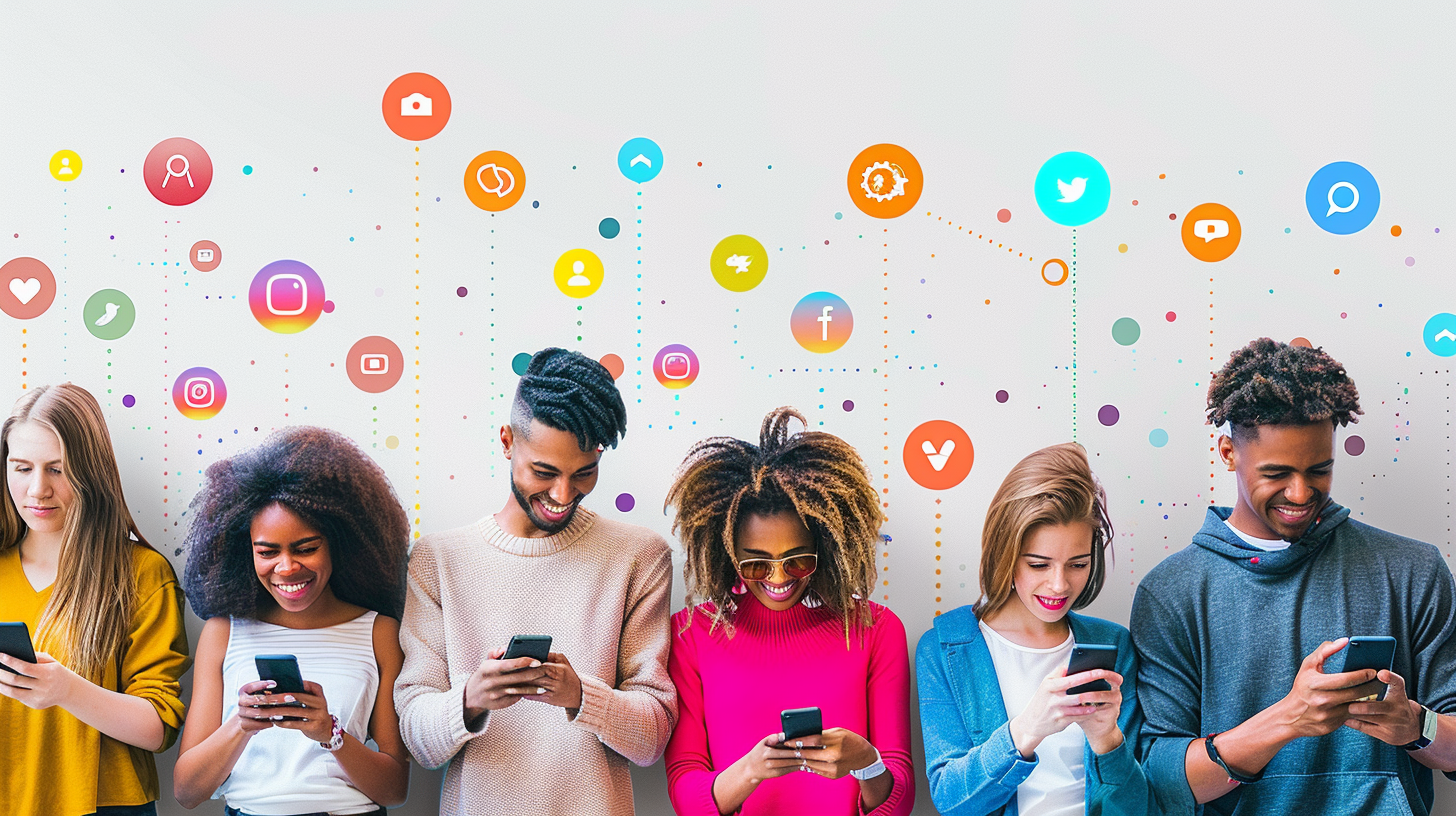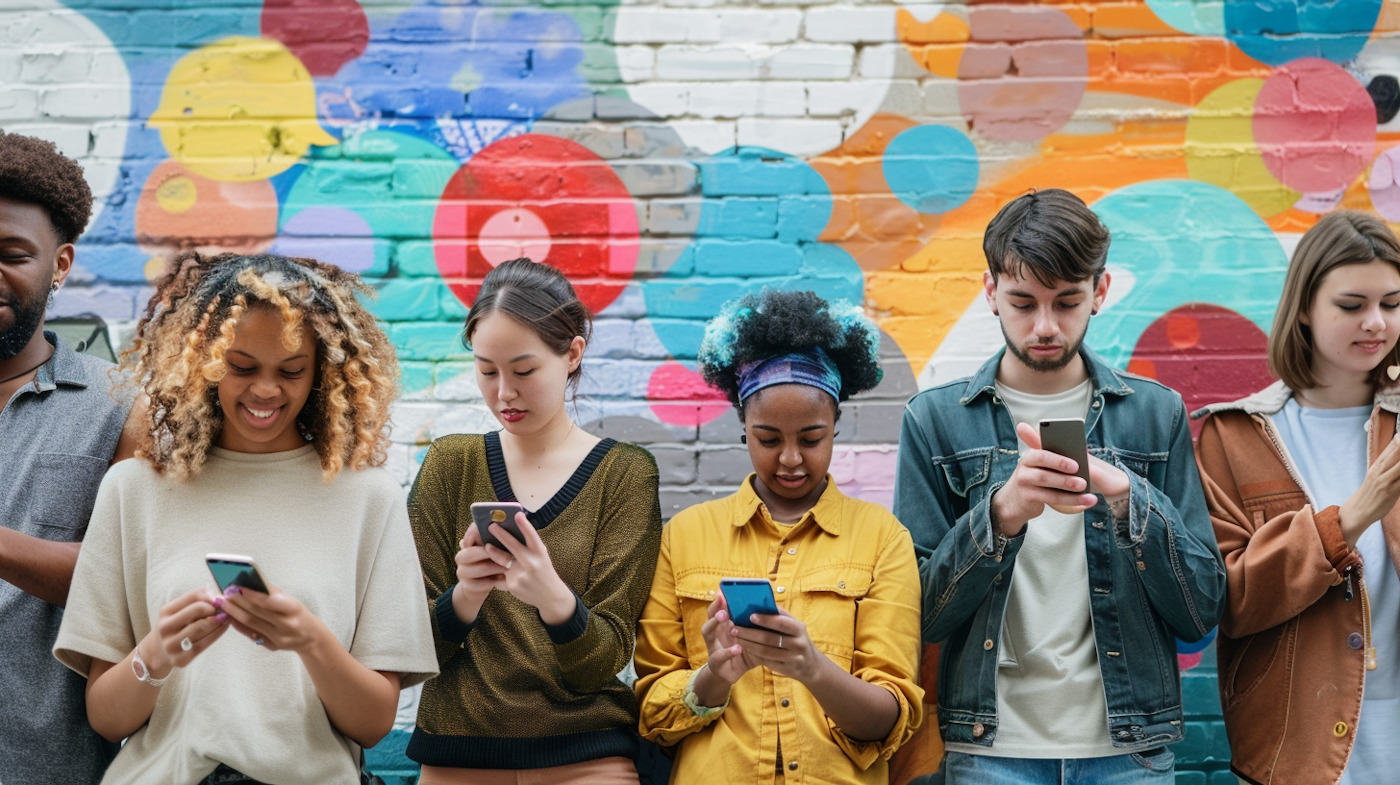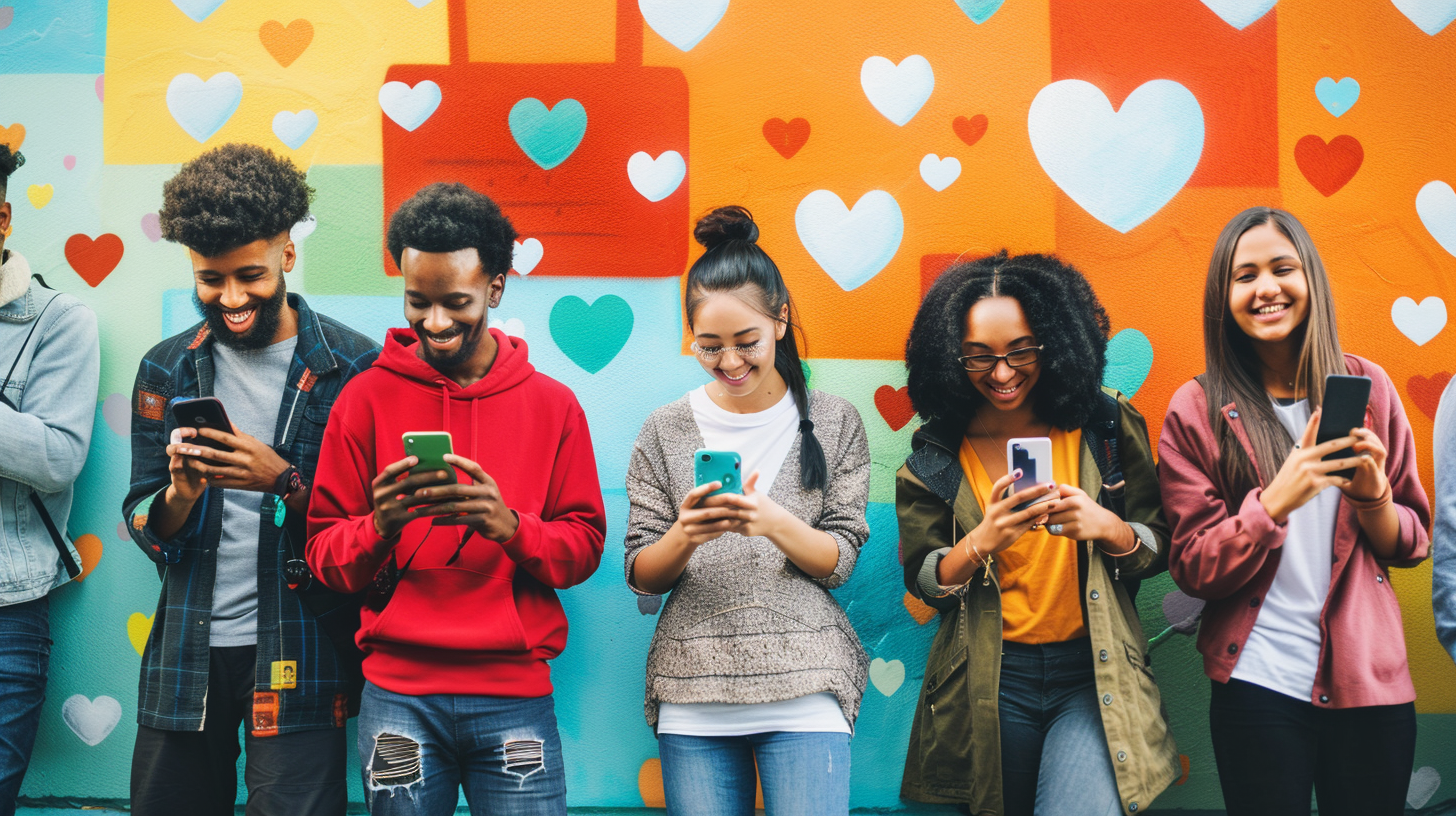11 Social Media Trends in 2024
Even in 2024, Facebook reigns supreme in the world of social media. With an impressive 2.9 billion monthly active users, Facebook's ability to adapt and respond to changing user behavior and market trends has cemented its position at the top. However, brands should be mindful of Facebook's relatively low engagement rate of 0.86%, emphasizing the need for strategic content planning to engage audiences effectively on this platform.
A Dip in Social Media Adoption
Social media adoption has seen a decrease, dropping from 14% in 2021 to 8% in 2023, as per a study by Martech. This reduction could be attributed to factors like information overload or privacy issues. For brands, this signals the need for a refined approach to social media campaigns. The focus should be on quality content and building authentic connections with the audience.
Influencer Marketing: More Powerful Than Ever
Influencer marketing continues to thrive despite the dip in social media adoption, with projections suggesting it could reach $22.2B by 2025. The key to its success? Trust. Consumers often trust recommendations from admired or relatable figures more than brand advertisements. Brands that can form successful collaborations with influencers who resonate with their target audience are likely to reap significant benefits.

Examining Engagement Rates Across Platforms
Engagement rates serve as an important indicator of a brand's social media strategy success. As of January 2024, Instagram has an average engagement rate of 1.68%, followed by Twitter (1.23%) and LinkedIn (0.54%). These statistics suggest that Instagram and Twitter might provide better opportunities for brands to interact with their audience. However, brands should also take into account factors like audience demographics and content relevance when selecting their primary social media platforms.
Instagram's Audience: A Closer Look at Demographics
Did you know that 27.4% of US Instagram users are between 25 and 34 years old? This age group, often referred to as millennials, greatly influences digital consumer trends. Brands aiming to engage this demographic should adapt their Instagram content to align with the values, attitudes, and interests of millennials. This can be achieved by incorporating user-generated content, sustainability initiatives, or interactive features like polls and quizzes.
Social Media: A Global Platform
With 4.95 billion active social media users worldwide, representing 60% of the global population, brands have a vast and diverse audience to reach. This diversity necessitates a localized approach to social media strategy, involving not only content translation but also understanding and respecting cultural nuances.
AI and Social Media: A Complex Relationship
Artificial Intelligence (AI) is now a key player in social media strategy. Brands are turning to AI for tasks like editing images and customer support, with usage expected to increase by 318% and 260% respectively in 2024. However, integrating AI comes with its challenges. 34% of consumers feel that AI interactions lack a personal touch, and 56% prefer some level of human interaction. Brands must find a balance between AI efficiency and maintaining a human touch to build genuine relationships with their audience.
Content Strategy: The Power of Humor and Relatability
Brands are quickly understanding that to cut through the noise, the content they share on social media needs to resonate on a personal level. According to recent data, 66% of social media marketers find that amusing content outperforms other types, with relatable (63%) and trendy (59%) content following closely behind. What does this tell us? People crave content that entertains, connects, and feels pertinent to their lives. A brand that can make its audience laugh or nod in agreement is one that can foster a loyal community.
LinkedIn's Progression: A Platform for Personal Branding
LinkedIn's environment is about to become far more personal. As predicted by Richard McBeath, CEO at Captain, "In 2024, we're likely to see a significant increase in LinkedIn usage, especially for B2B companies." He envisions more senior executives focusing on personal branding on the platform, which will not only strengthen their profiles but also highlight their organizations. LinkedIn's potential for thought leadership and personal insights is immense, and savvy brands and professionals will capitalize on this trend to stand out.
The Influence of TikTok: A New Search Hub
TikTok is rapidly transforming into a search hub, with features like instant pages allowing users to access a page from a site right within the app. This innovation is a boon for companies looking to capture potential customers without requiring them to leave TikTok. The platform's foray into search also opens up new avenues for organic content discovery. As users turn to TikTok for everything from product reviews to DIY guides, brands have a golden opportunity to meet them where they are—searching.
The Power of Micro-influencers on TikTok
The tide is turning toward micro-influencers, particularly on TikTok. These individuals may not have the follower counts of their more famous counterparts, but they wield significant influence within their niches. As Josh Ades, Startup Advisor at Fun Guy Growth, points out, "Micro-influencers are your golden ticket here. And TikTok? That's where the magic's happening." His comment underscores the pivotal role these influencers play in shaping trends and promoting brands in a more authentic, approachable manner.
Wrapping it up
In summing up the social media trends of 2024, it's clear that the digital world is both growing in complexity and becoming more refined in the ways brands can connect with their audience. As platforms like Facebook continue to dominate in sheer numbers, the changing environment calls for a more strategic approach to content. The rise of influencer marketing, particularly with the power of micro-influencers, demonstrates the ongoing value of personal connection in a digital space.
Engagement rates across platforms signal where brands might focus their efforts, but understanding the demographics and behaviors of their audience is crucial. Platforms like Instagram and TikTok are not only avenues for content but are also emerging as spaces where searches begin and end. LinkedIn's move towards personal branding opens up new frontiers for B2B communication and thought leadership.
The integration of AI in social media strategies presents a balancing act between efficiency and the desire for a personal touch. As the lines between technology and human interaction blur, brands that can navigate this balance will thrive.
Looking ahead, the constants in social media will be change and the need for adaptability. Brands that stay attuned to these trends and evolve their strategies will see accelerated growth. It's about meeting your audience where they are, in a way that feels genuine and engaging.





